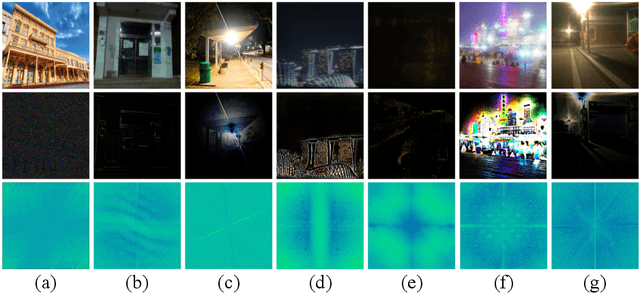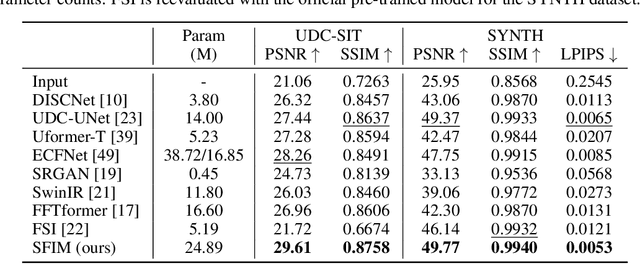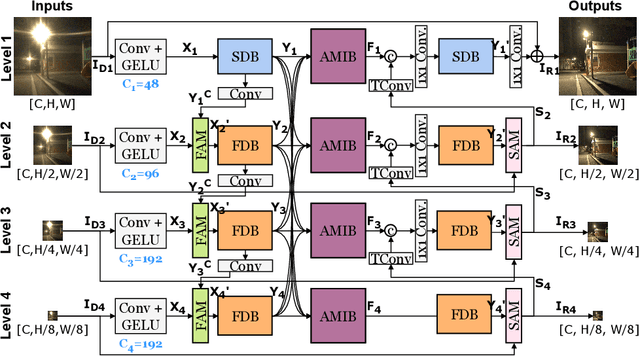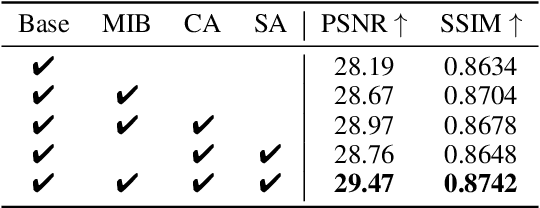Jinpyo Kim
Integrating Spatial and Frequency Information for Under-Display Camera Image Restoration
Jan 30, 2025



Abstract:Under-Display Camera (UDC) houses a digital camera lens under a display panel. However, UDC introduces complex degradations such as noise, blur, decrease in transmittance, and flare. Despite the remarkable progress, previous research on UDC mainly focuses on eliminating diffraction in the spatial domain and rarely explores its potential in the frequency domain. It is essential to consider both the spatial and frequency domains effectively. For example, degradations, such as noise and blur, can be addressed by local information (e.g., CNN kernels in the spatial domain). At the same time, tackling flares may require leveraging global information (e.g., the frequency domain). In this paper, we revisit the UDC degradations in the Fourier space and figure out intrinsic frequency priors that imply the presence of the flares. Based on this observation, we propose a novel multi-level DNN architecture called SFIM. It efficiently restores UDC-distorted images by integrating local and global (the collective contribution of all points in the image) information. The architecture exploits CNNs to capture local information and FFT-based models to capture global information. SFIM comprises a spatial domain block (SDB), a Frequency Domain Block (FDB), and an Attention-based Multi-level Integration Block (AMIB). Specifically, SDB focuses more on detailed textures such as noise and blur, FDB emphasizes irregular texture loss in extensive areas such as flare, and AMIB enables effective cross-domain interaction. SFIM's superior performance over state-of-the-art approaches is demonstrated through rigorous quantitative and qualitative assessments across three UDC benchmarks.
CyCNN: A Rotation Invariant CNN using Polar Mapping and Cylindrical Convolution Layers
Jul 21, 2020



Abstract:Deep Convolutional Neural Networks (CNNs) are empirically known to be invariant to moderate translation but not to rotation in image classification. This paper proposes a deep CNN model, called CyCNN, which exploits polar mapping of input images to convert rotation to translation. To deal with the cylindrical property of the polar coordinates, we replace convolution layers in conventional CNNs to cylindrical convolutional (CyConv) layers. A CyConv layer exploits the cylindrically sliding windows (CSW) mechanism that vertically extends the input-image receptive fields of boundary units in a convolutional layer. We evaluate CyCNN and conventional CNN models for classification tasks on rotated MNIST, CIFAR-10, and SVHN datasets. We show that if there is no data augmentation during training, CyCNN significantly improves classification accuracies when compared to conventional CNN models. Our implementation of CyCNN is publicly available on https://github.com/mcrl/CyCNN.
 Add to Chrome
Add to Chrome Add to Firefox
Add to Firefox Add to Edge
Add to Edge